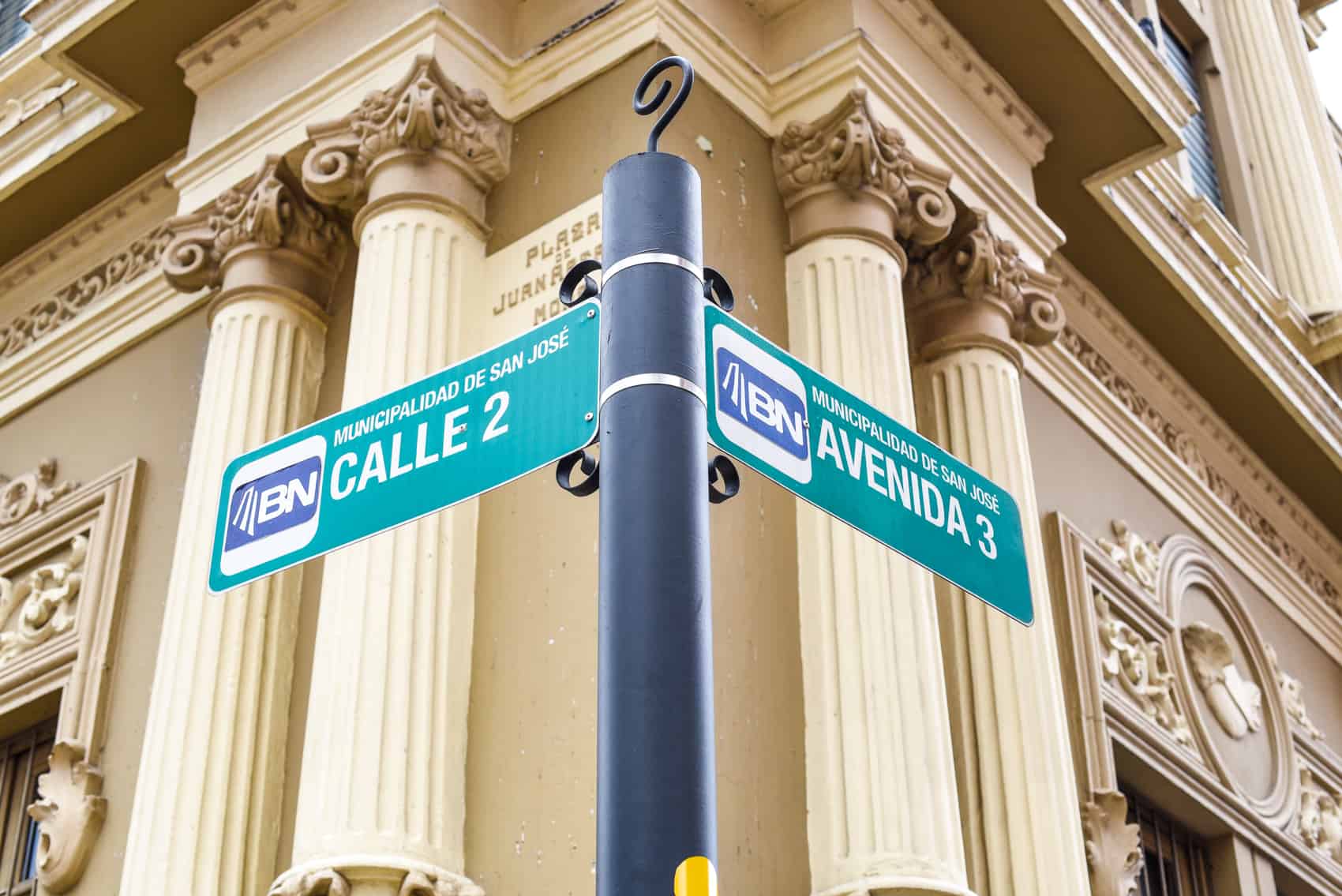Costa Rica has some pretty unusual place names. There is Medio Queso, or Half a Cheese. Malpaís, or Bad Country and Sapo Triste or Sad Toad. Pocosol or Little Sun, El Fósforo or The Match, Toro Amarillo – Yellow Bull – and Abundancia or Abundance are included in the lists of rare or strange names.
Some places are named after countries and cities. Atenas (Athens) and Grecia (Greece) were settled shortly after Costa Rica gained independence, and they were named to honor the country fighting for independence from Turkey.
Berlin, a part of San Ramón, takes its name from the immigrant colony that arrived at the invitation of Alexander Von Buelow and the Sociedad Berlinesa de Colonización de Costa Rica in the 1840s. San Vito de Coto Brus was so named for Saint Vito by Italian settlers who came in 1952 under a program of the Italian Society for Agricultural Colonization, and the man who led them to Costa Rica, Vito Sansonetti.
Some names are colloquial, known by regardless of their absence from the map. Infiernillo, or Little Hell is a neighborhood of Alajuela notorious as a home for drugs, assaults and assorted crime. And a lot of contraband liquor was distilled in Guaro Mal. Everyone in Grecia knows where the Cruce de la Loca is. The man who owned the cantina on that corner was gay and the feminine word loca was used to describe an effeminate man. The term was not considered prejudicial.
Some names border on the vulgar, yet are accepted by those who live in the area.
In Alajuela, in a dip along the old road to Río Segundo, we find Vuelta del Pedo, or Fart Corners. Everyone knows the area and it brings out smiles when you ask about it. The name was earned thanks to a leather processing plant that contaminated the whole valley. Add to that the smell of the river during the coffee harvest when processors dumped the outer skins of the coffee right into the river. “El olor fue fatal,” said one man who lived there all his life. The smell was deadly. Another resident remembered that people became sick from the overpowering odor. With more concern about the environment, the factory and the coffee processing plants had to stop polluting.
Grecia has an area called Bajo el Blumer. Really! It is down in a little valley near the huge Cooperative Victoria. There are at least two versions of how it got named. According to the man at the gas station, it’s because women would hang the wash on the fences and the roads would be lined with underpants. But local historian José Luis Blanco, who has written books on the area, said it was nicknamed by the men who worked at the cooperative. They were familiar with the area with its fields and vacant lots and that’s where they took their girlfriends on dates.
Then, there are the people living in Mierda (Shit). That is not the official name of this village in Caña Dulce de Liberia, but everyone knows “this is Mierda,” says school director Marianela Montoya. When she got sent to the village school and told friends that she would be at the school in Mierda, they were shocked at her use of the word, and in a report on Channel 11’s Informe Once, the name was bleeped out.
The name is attributed to a man who lived there but walked the few miles to Caña Dulce to spend time in bars. When anyone asked where he lived, he always answered “en Mierda.” According to school director Montoya, older people accept the name and think it’s kind of funny but the school children get teased by kids from other neighborhoods. The official name, the one Mierdans prefer to use, is Buena Vista, or, Beautiful View.
Muchas gracias to José Luis Blanco M. for historical facts about Grecia, and to others who helped find locations.

